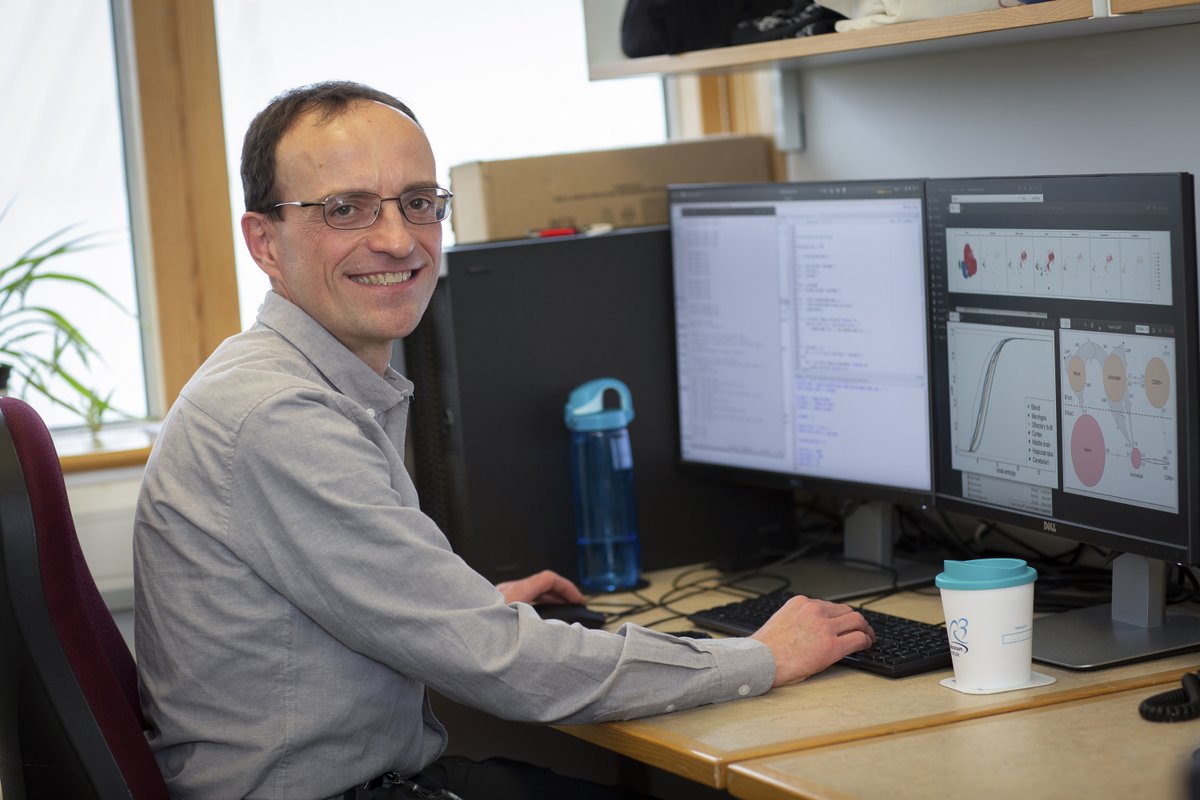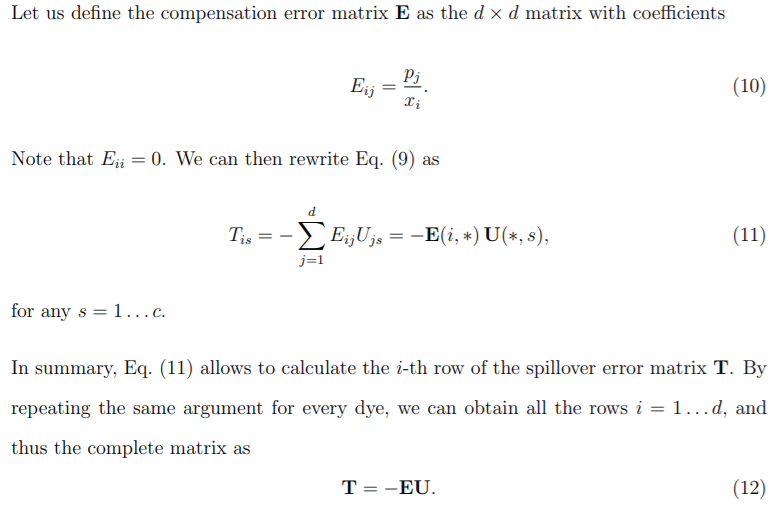I am really thrilled to release #AutoSpill onto @biorxivpreprint. It is a novel method for applying compensation to #flowcytometry data, which reduces the error by ~100,000-fold. It is thanks to AutoSpill that we can push machines to their max colours https://www.biorxiv.org/content/10.1101/2020.06.29.177196v1
#AutoSpill is a beautiful example of what #maths can add to #immunology, led by the talented Dr Carlos Roca.
It has really open up my eyes to the potential of #computationalbiology, and is the reason why we have a new #datascience position available:
https://babrahaminstitute.livevacancies.co.uk/#/job/details/146
It has really open up my eyes to the potential of #computationalbiology, and is the reason why we have a new #datascience position available:
https://babrahaminstitute.livevacancies.co.uk/#/job/details/146
So how does #AutoSpill work? If you just want to compensate your data, simply upload your single colour controls to https://autospill.vib.be/ and then copy the spillover matrix to your #flowcytometry program of choice
@CarlyEWhyte can walk you through the whole process in <2'
@CarlyEWhyte can walk you through the whole process in <2'
If you program your #flowcytometry analysis in R, we have also released the #AutoSpill full code, so you can add this to your bioinformatics pipeline. Details on the @biorxiv_immuno pre-print: https://www.biorxiv.org/content/10.1101/2020.06.29.177196v1
Quick shout out to my high school maths teacher @apharradine. I went full-biology mode at university, but thanks to him we are now writing papers that discuss "the linearity of the quantum mechanical nature of photons"
Sorry about the equation #immunology peeps! I promise you don't need to understand maths to use #AutoSpill. Here are sample examples. In high dimensional #flowcytometry traditional comp errors create artefacts. AutoSpill creates a perfect spillover matrix:
What does a "perfect" spillover matrix mean? An error reduction of 100,000-fold on average, to the point where error is practically zero. But the compensation can still only be as good as the quality of the single colour controls!
If you want to run 28 colour #flowcytometry on a 28 colour machine, you can spend hours-upon-hours compensating your data by hand, or 2 minutes with #AutoSpill. AutoSpill is designed to run through the same operations that a skilled flow user does, just faster
It is a huge surprise to me, but with the enormous effort over decades to add extra lasers and new flurophores onto machines, the mathematics behind compensation hasn't been updated since 1993, where it was designed for 3 colour flow on computers with 100,000-fold less capacity
Traditional compensation defines a positive and a negative population, finds the slope and uses that as the spillover matrix. It still works okay in most cases, it is just that the errors start piling up when you are making 250+ calculations on a high parameter dataset
#AutoSpill is actually fairly simple at heart:
1. Draw an automatic live cell gate
2. Use linear regression to take into account every cell, not just the two data points of average positive and average negative
3. Calculate the error left
4. Tweak the matrix until error is gone
1. Draw an automatic live cell gate
2. Use linear regression to take into account every cell, not just the two data points of average positive and average negative
3. Calculate the error left
4. Tweak the matrix until error is gone
The underlying mathematics is tougher though, because #AutoSpill was built for actual #flowcytometry users, not as a computational exercise. Carlos built the original pipeline, and then we extensively beta-tested it on 1000+ datasets over 20 months. Thanks collaborators!
Something as simple as a live gate becomes complex when you want it to robustly work on any dataset, cells or beads, collected on any machine. I'll spare you the details, but two stage tesselation and a 33% density estimation using a convex hull did the trick
Oh, and I almost forgot. #AutoSpill can remove most of the autofluroscence from your #flowcytometry sample. Do you work on #cancer or #myeloid cells? Then you know the literature is full of autofluroscence artefacts. We can fix that for you.
Turns out, while cells have different amounts of autofluorescence, the spectrum of that autofluirescence is fairly constant. You can collect empty data in the worst autofluorescent channel, then use that to compensate it out of every other channel https://www.biorxiv.org/content/10.1101/2020.06.29.177196v1
Back in the day, there were many published reports of #Foxp3 expression in macrophages, epithelium, cancer, etc. All autofluorescent artefacts that wasted years of research.
See how easily #AutoSpill removes this autofluorescence specifically from the macrophages:
See how easily #AutoSpill removes this autofluorescence specifically from the macrophages:
Or how about #microglia? At homeostasis, do they express MHCII at low levels or not? Nope, it is just autofluorescence, easily removed by #AutoSpill
 #flowcytometry
#flowcytometry
 #flowcytometry
#flowcytometry
If you like #AutoSpill, keep an eye out for our upcoming statistical package for #tSNE and #UMAP. If you come from a #math, #computerscience or #datascience background, how about you come join us @BabrahamInst and work on the next big thing?
http://www.liston.babraham.ac.uk/blog/2020/6/18/position-open-for-a-data-scientist.html
http://www.liston.babraham.ac.uk/blog/2020/6/18/position-open-for-a-data-scientist.html
One last thing: #AutoSpill can give you perfect compensation. But only if it is working on perfect data. It is a tool to get the most out of #flowcytometry, not a bandaid to fix poor data. Listen to the #flowguru in your local Core Facility!
 Core Facility staff
Core Facility staff
 Core Facility staff
Core Facility staff

 Read on Twitter
Read on Twitter








